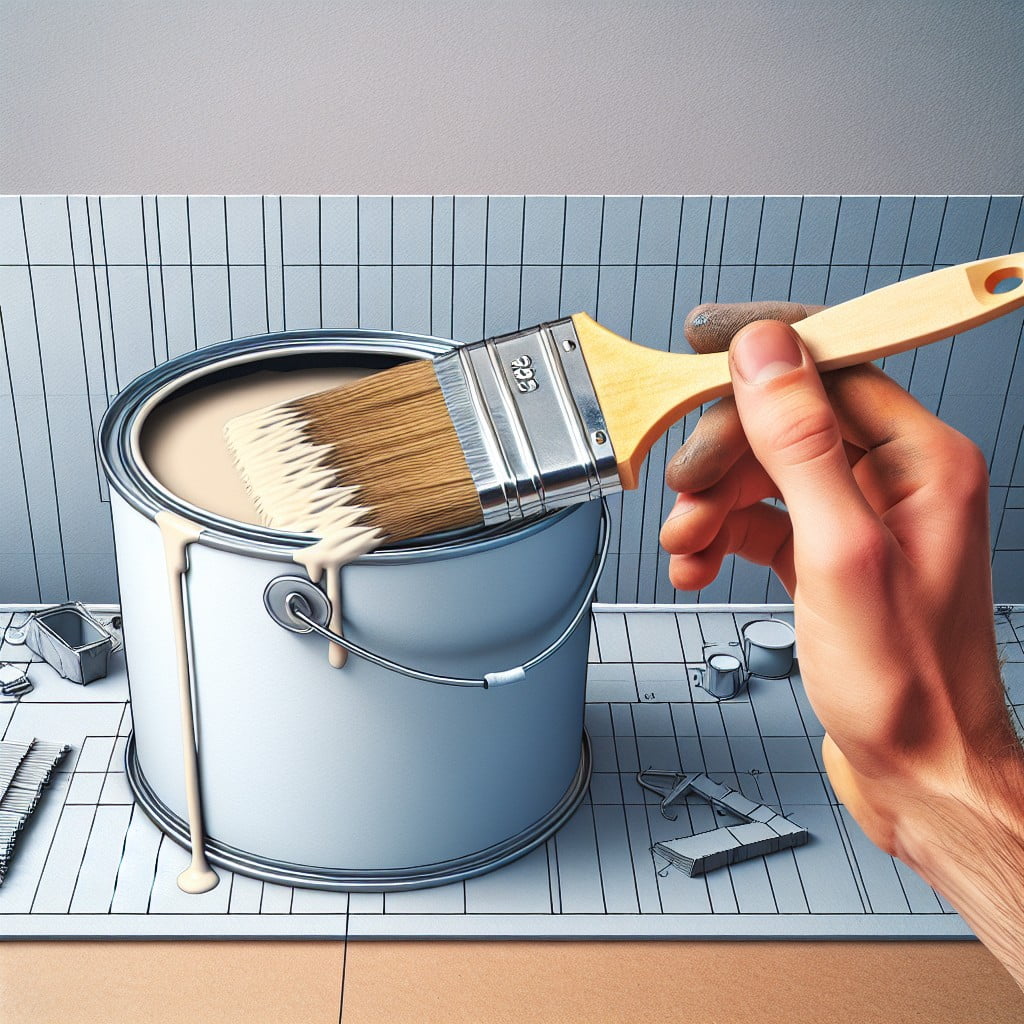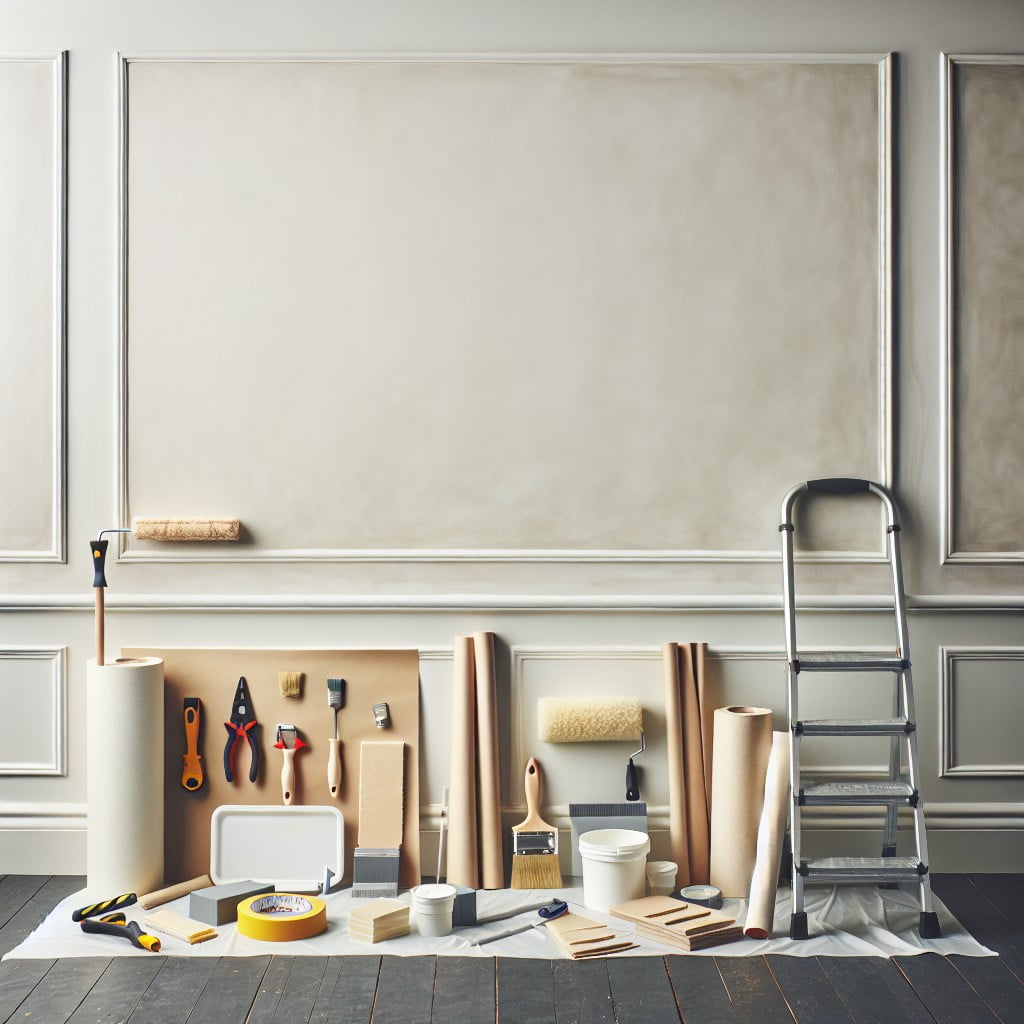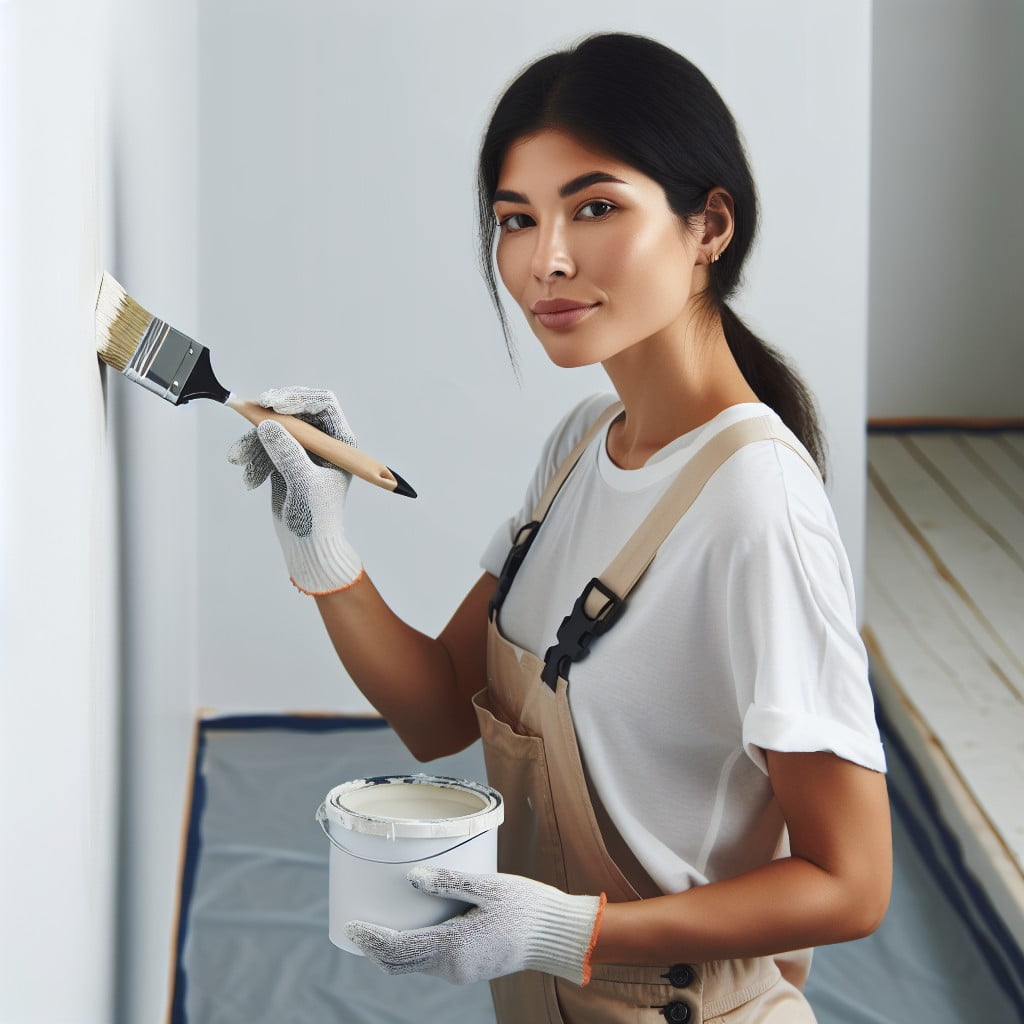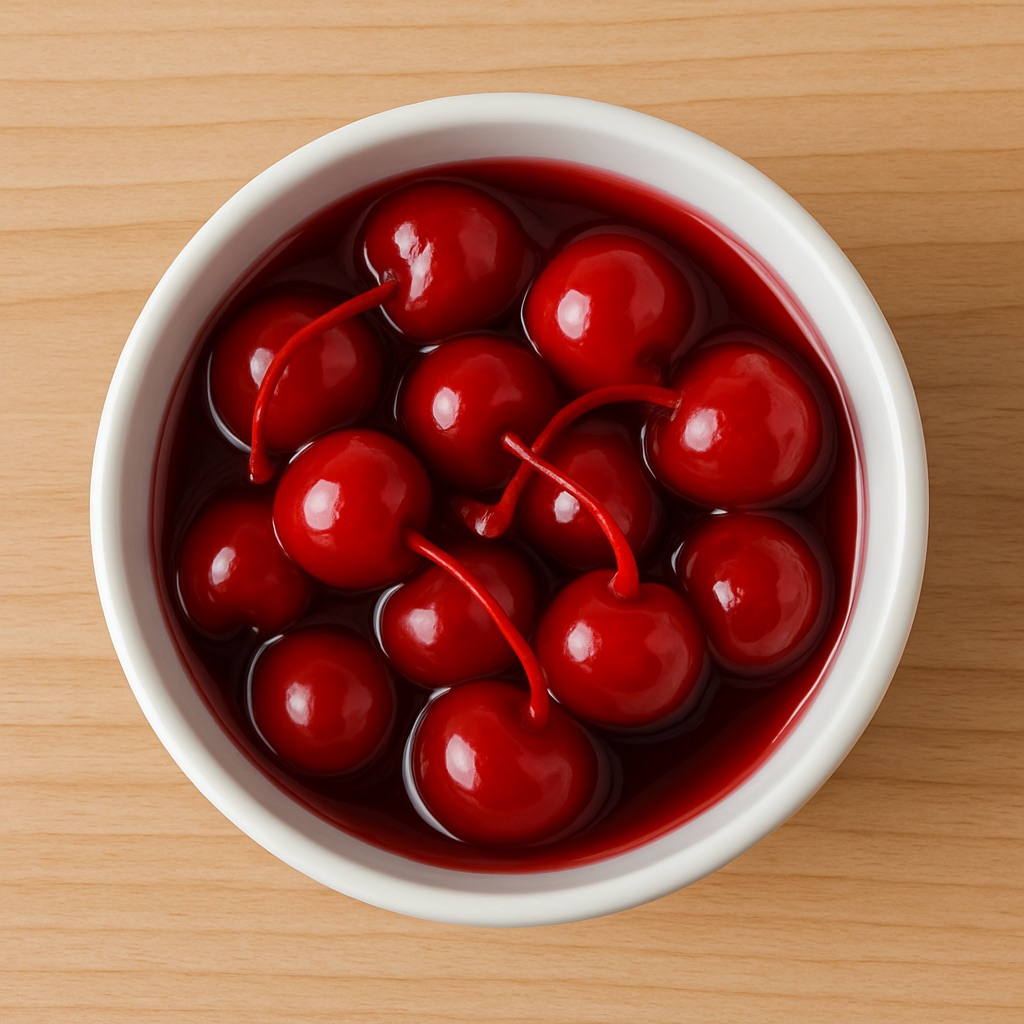Last updated on
Discover how much time you might spend painting a wall, because the complexities involved in achieving a flawless finish are often underestimated.
Key takeaways:
- Calculating paint coverage and time needed based on wall size
- Preparing the wall before painting for a professional finish
- Understanding paint drying times and recoat intervals
- Factors affecting the time required for cutting in
- Assessing the number of coats and the role of paint quality
Understanding Wall Size and Paint Coverage

To make sense of how much paint you’ll need and how long the project might take, start by measuring the wall’s height and width to calculate the total square footage. A standard can of paint typically covers 400 square feet, but check the label for exact coverage. Remember to subtract the space taken up by doors and windows for a more accurate estimate.
Divide the wall area by the paint coverage to determine the number of cans required. Larger walls or a room with high ceilings will demand more time and paint, while smaller areas can often be completed more quickly. Keep in mind that textured walls or painting over a dark color may require additional paint to achieve even coverage.
Pre-painting Preparation Steps

Before dipping your brush into the paint, several preparation activities are essential for a smooth painting process and professional-looking results.
- Cleaning the Wall: Remove dust, dirt, and grease with a damp cloth or sponge, ensuring paint adheres properly.
- Repairing Surface Imperfections: Fill any holes or cracks with spackle or joint compound; sand smooth once dry.
- Taping Trim and Fixtures: Apply painter’s tape to baseboards, window frames, and light switches to protect against accidental strokes.
- Covering Floors and Furniture: Use drop cloths or plastic sheeting to shield against drips and spills.
- Priming the Wall: Apply a primer coat if you’re changing the wall’s color radically, or if the surface has stains or is porous.
- Gathering Materials: Assemble all brushes, rollers, paint trays, and extension poles to keep the workflow uninterrupted.
By diligently following these steps, you’ll set the stage for a successful and efficient paint job.
Calculating Paint Drying Times Between Coats

Understanding the drying time for paint is crucial for a successful paint job. Different types of paint have varying drying times; latex-based paints typically dry to the touch within one hour and are ready for a recoat in four hours, while oil-based paints may take six to eight hours to dry to the touch and 24 hours before reapplication.
Room temperature and humidity play a significant role in drying time. Ideal conditions are around 70°F with 50% humidity; deviations can speed up or slow down the process. Paint manufacturers often provide recommended drying times, but always check the paint surface before the next coat; it should feel completely dry and not tacky. Ventilation helps expedite drying, so consider using fans or keeping windows open if the weather permits.
Also, a primer coat often requires a longer drying time than subsequent coats of paint, so adjust your timing accordingly. Remember, rushing the recoat process can lead to peeling or streaking, compromising the final look.
Estimating the Time for Cutting In

**Cutting in** is a precise task where you paint the edges and corners of a wall with a brush. This technique requires a steady hand and attention to detail, as it sets the stage for the main wall application. Here’s what to consider:
1. **Skill Level:** Beginners may take longer, roughly 10-15 minutes per wall, due to careful application, while experienced painters might cut in the same space in 5-10 minutes.
2. **Wall Complexity:** Walls with more windows, doors, or intricate trim work add to the cutting in time due to the extra care needed.
3. **Brush Quality:** A high-quality angled brush can speed up the process, allowing for better control and more uniform edge painting.
4. **Pre-taped Edges:** Applying painter’s tape to protect trim, ceilings, and adjacent walls speeds up cutting in, as less precision is required.
Bear in mind that this meticulous step, although time-consuming, is essential for a professional-looking finish and cannot be rushed without sacrificing quality.
Assessing the Number of Coats Required
The opacity of the paint and the color disparity between the new paint and the original hue largely determine if a second or even a third coat is necessary. A light color over a dark wall may need additional layers to achieve full coverage. Conversely, one coat might suffice when repainting with a similar shade.
Primer plays a crucial role when transitioning from dark to light walls, serving as a base for the topcoat and reducing the number of paint coats required. In cases of patchwork or repairs, a primer ensures even coverage and seamless blending into the surrounding area.
High-quality paints with built-in primer and greater pigment concentration often lead to fewer coats. However, it is essential to refer to the manufacturer’s recommendations, as some scenarios dictate a set number of coats regardless of paint quality for warranty purposes.
In summary, predicting the number of coats involves considering color changes, paint quality, and whether a primer is used. Proper assessment before starting the job leads to efficient use of time and materials.
The Role of Painter’s Experience and Skill Level
A novice may approach a wall tentatively, meticulously applying paint with careful strokes to avoid mistakes. This cautious method can lead to more time spent on the task. In contrast, a veteran painter with a steady hand and a practiced eye can swiftly cover large areas evenly, reducing the overall time required. Greater familiarity with techniques such as ‘cutting in’ around edges results in faster, cleaner lines without the need for touch-ups.
Moreover, seasoned painters have a knack for efficiently managing their workflow. They know how to systematically move around the room and handle the tools of their trade to maintain a steady pace. This proficiency ensures that time is not lost transitioning between tasks or correcting errors. Understanding the nuances of different paint types and how they respond to wall surfaces also contributes to a professional’s ability to work swiftly and effectively.
In essence, with experience comes speed and precision, two key ingredients for completing a wall-painting project expeditiously.
Factors Influencing Total Painting Time
The condition of the wall can greatly affect the painting timeline. Imperfections like cracks or holes will need filling and sanding, which takes additional time. On the other hand, smooth and well-maintained walls are quicker to paint.
Room humidity and temperature play a part as well. High humidity or cooler temperatures prolong drying times, while a warm, dry climate can speed up the process.
The type of paint chosen also impacts the duration. Oil-based paints typically have longer drying times compared to water-based latex paints, which are quicker to dry and allow for faster recoat times.
The painting technique used may alter the timescale. For example, using a roller covers large areas faster than a brush, but a brush might be necessary for detailed work, which is more time-consuming.
The complexity of the job, including the number of colors and the need for precision around trim or in corners, can extend painting time as precision work is slower to execute.
Lastly, the painter’s experience will influence efficiency. More experienced painters can work quicker while still delivering high-quality results.
Tools and Equipment: Speed and Efficiency
Selecting the right tools can significantly streamline the painting process. High-quality rollers, for instance, hold more paint and distribute it more evenly than cheaper alternatives, reducing the number of dips and trips to the paint tray.
A paint sprayer, while requiring a bit more upfront preparation, can cover large areas quickly and with remarkable consistency, although it might not be suitable for fine detail work.
For corners and edges, invest in quality angled brushes to achieve sharp lines without multiple touch-ups.
Lastly, an extendable roller handle can save time on ladder adjustments when working on taller walls, ensuring you cover more area with less physical repositioning.
Efficient tools not only expedite the painting job but can also yield a more polished final look.
Application Techniques: Brush, Roller, or Sprayer
The choice of tool significantly impacts the time efficiency and final finish of a wall-painting project. Brushes are excellent for precision work, such as painting edges or trim, but they can be time-consuming for larger surface areas. Rollers cover more space with each stroke and create a more uniform coat more quickly than brushes, making them a preferred option for the majority of the wall space.
On the other hand, using a sprayer is the fastest application method and provides a smooth finish. However, it requires considerable prep work, including masking off areas to protect from overspray. It’s also worth noting that sprayers typically have a learning curve and are best for experienced users to avoid uneven coverage. Efficiency is paramount, and the right tool for the task makes all the difference in both the time investment and quality of the paint job.
When to Consider Hiring a Professional Painter
While painting can be a satisfying DIY project, certain scenarios warrant the expertise of a professional painter. Consider enlisting a professional if:
- Time Constraints: If you’re under a tight deadline and cannot afford the extended time it often takes non-professionals to complete a painting job, a professional can deliver quality results more quickly.
- Complex Surfaces: Walls with high ceilings, intricate textures, or those requiring significant repair might be better handled by someone with the right tools and experience.
- Health Concerns: If you have respiratory issues or are concerned about exposure to fumes and chemicals, professionals have the equipment and expertise to handle these hazards safely.
- Quality Finish: For those seeking a higher-end finish or who are not confident in their ability to achieve even coats and crisp edges, a professional’s proficiency can ensure a polished look.
- Multiple Rooms or Exteriors: Large-scale projects can be overwhelming and physically demanding. Professionals are equipped to tackle expansive or exterior spaces efficiently.
By assessing your specific situation and considering these points, you’ll be able to make an informed decision about whether to DIY or call in a pro.
FAQ
Can you paint a wall in one day?
Yes, painting a wall can be completed in one day, considering 3-4 hours for preparation and paint application, and a variable drying time influenced by the environment, temperature, and locale.
How long does it take to paint an average wall?
On average, applying two coats of paint on an entire wall, inclusive of drying time between the coats, takes roughly two and a half hours.
How long does it take to paint a 12×12 wall?
An experienced painter would typically require between 4 to 6 hours to paint a 12×12 wall, factoring in the time for preparation, applying two coats of paint, and cleanup.
What factors determine the time required to paint a wall?
The time required to paint a wall is determined by factors such as the size of the wall, the condition of the wall, the type of paint used, the number of coats required, and the expertise of the painter.
Is it possible to expedite the wall painting process without compromising on quality?
Yes, the wall painting process can be expedied without compromising on quality through proper planning, choosing the right paint and using modern tools and techniques.
How does the type of paint affect the duration of the painting process?
The type of paint can significantly affect the duration of the painting process due to varying drying times, application methods, and the number of coats needed.
Recap:




